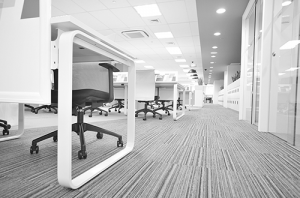Featured Post
Best Practices for Remote Work Success
Remote work has become increasingly popular, offering flexibility and convenience. However, it also presents unique challenges. This article explores best practices for remote work success, including tips for setting up an efficient home office, maintaining work-life balance, and staying productive. Whether you're new to remote work or looking to improve your current setup, these strategies will help you thrive in a remote work environment.
Setting Up Your Home Office
Creating a dedicated workspace is crucial for remote work success. Choose a quiet area with minimal distractions, ideally separate from your living spaces. This helps establish a clear boundary between work and personal life. When selecting a location, consider factors like natural light, ventilation, and proximity to power outlets.
Ergonomics play a vital role in your home office setup. Invest in a comfortable chair that supports your back and promotes good posture. Consider a standing desk to alternate between sitting and standing, reducing the risk of sedentary-related health issues. For more information on ergonomic furniture, check out our Ergonomic Office Furniture Guide.
Essential equipment includes a reliable computer, high-speed internet, and any necessary peripherals like a printer or scanner. Don't forget to organize your cables and keep your workspace tidy to minimize clutter and maximize productivity.

Optimizing Your Workspace
A well-organized workspace can significantly impact your focus and efficiency. Start by decluttering your desk and surrounding area. Keep only the essentials within reach, such as your computer, notebook, and a pen. Use storage solutions like shelves or drawers to keep other items out of sight.
Personalize your space with items that inspire you, such as family photos, artwork, or motivational quotes. Incorporating plants can also improve air quality and add a touch of nature to your environment. Adjust your lighting to reduce eye strain—natural light is best, but if that's not possible, use a combination of overhead and task lighting.
Temperature control is another important factor. Ensure your workspace is neither too hot nor too cold, as extreme temperatures can affect your concentration and comfort.

Ergonomic Furniture for Remote Work
Ergonomic furniture is designed to support your body's natural alignment, reducing the risk of musculoskeletal disorders. Standing desks, for example, allow you to alternate between sitting and standing, promoting better circulation and reducing back pain. To learn more about the benefits, read our article on The Benefits of Standing Desks: Are They Worth It?.
When choosing a chair, look for one with adjustable features, such as lumbar support, armrests, and seat height. These adjustments allow you to customize the chair to your body, ensuring maximum comfort and support. Office furniture with adjustable features is essential for maintaining good posture and preventing discomfort during long work hours.
Consider additional accessories like a footrest, monitor stand, or ergonomic keyboard to further enhance your setup. These small investments can make a big difference in your overall comfort and productivity.

Maintaining Productivity
Establishing a routine is key to staying productive while working remotely. Set regular work hours and stick to them as much as possible. This helps create a sense of normalcy and structure, making it easier to focus on tasks.
Setting boundaries between work and personal life is crucial. Communicate your work hours to family members or roommates to minimize interruptions. Use productivity tools and apps to manage your tasks, set reminders, and track your progress.
Taking regular breaks is essential for maintaining focus and preventing burnout. Step away from your desk, stretch, or take a short walk to refresh your mind. Practicing self-care, such as staying hydrated and eating nutritious meals, also contributes to your overall well-being and productivity.

Communication and Collaboration
Effective communication is vital in a remote work environment. Use clear and concise language in emails and messages to avoid misunderstandings. Leverage collaboration tools like video conferencing, instant messaging, and project management software to stay connected with your team.
Building and maintaining team relationships can be challenging remotely, but it's not impossible. Schedule regular check-ins, virtual coffee breaks, or team-building activities to foster a sense of camaraderie. Be proactive in reaching out to colleagues and offering support when needed.
Overcoming common remote work challenges, such as feelings of isolation or difficulty in separating work from personal life, requires intentional effort. Stay connected with your team, seek support when needed, and prioritize your mental health.

Work-Life Balance
Achieving work-life balance is essential for long-term remote work success. Set clear work hours and stick to them, resisting the temptation to work outside those times. Create a transition routine to signal the end of your workday, such as closing your laptop, changing clothes, or taking a walk.
Prioritize personal time and hobbies to recharge and maintain a healthy balance. Engage in activities that bring you joy and relaxation, whether it's reading, exercising, or spending time with loved ones. Seeking support from friends, family, or a therapist can also help you navigate the challenges of remote work.
By implementing these best practices, you can create a productive and fulfilling remote work experience. Remember to adapt these strategies to your unique needs and preferences, and don't hesitate to experiment with different approaches until you find what works best for you.

Summary: Remote work offers flexibility and convenience, but it also requires intentional strategies to succeed. By setting up an efficient home office, optimizing your workspace, using ergonomic furniture, maintaining productivity, fostering effective communication, and prioritizing work-life balance, you can thrive in a remote work environment. Remember to adapt these practices to your unique needs and preferences for the best results.









